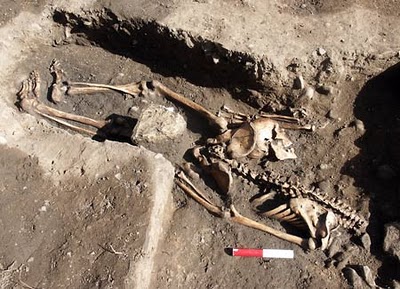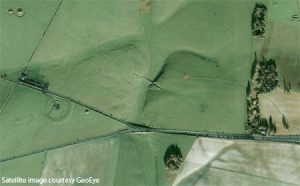 How does one transport a 1.8 million-year-old skull that might rewrite the history of mankind and has never before left the vault of the National Historic Museum in Tbilisi, Georgia? Very carefully, of course! The only person allowed to travel with the The ‘Dmanisi Skull’ – which suggests a Eurasian chapter in the long evolutionary story of man – is Professor David Lordkipanidze, director of the Georgian National Museum who brought the extra-ordinary find to the Naturalis Museum, Leiden for a special exhibition to end their one-year celebration of evolutionary scientist Charles Darwin.
How does one transport a 1.8 million-year-old skull that might rewrite the history of mankind and has never before left the vault of the National Historic Museum in Tbilisi, Georgia? Very carefully, of course! The only person allowed to travel with the The ‘Dmanisi Skull’ – which suggests a Eurasian chapter in the long evolutionary story of man – is Professor David Lordkipanidze, director of the Georgian National Museum who brought the extra-ordinary find to the Naturalis Museum, Leiden for a special exhibition to end their one-year celebration of evolutionary scientist Charles Darwin.
Archaeologists started in 1936 by excavating the mid-evil city Dmanisi, in the foothills of the Caucuses, Georgia. In 1984 they uncovered a surprise find:in an old waste disposal they found bones that belonged to a long-extinct rhinoceros rather than ordinary cattle, hinting at the presence of ancient fauna. A year later they started uncovering primitive tools, until the first human jaw was unearthed in 1995.
Until now, the archaeologists have discovered five well-preserved skulls of hominins dating to 1.8 million years ago, all resembling our earliest ancestors, having features in common with both Homo Habilis and Homo Erectus.
 One skull stands out for being extremely well-preserved, even the jawbone is intact and has become known as the ‘Dmanisi Skull’. It is thought this skull belonged to a 20-year-old man of about 1 meter 40 centimetres in height.
One skull stands out for being extremely well-preserved, even the jawbone is intact and has become known as the ‘Dmanisi Skull’. It is thought this skull belonged to a 20-year-old man of about 1 meter 40 centimetres in height.
These finds are the oldest indisputable remains of humans discovered outside of Africa, and suggest that these early humans were far more primitive-looking than the Homo erectus humans that were, until now, believed to be the first people to migrate out of Africa about 1 million years ago.
Professor Lordkipanidze, general director of the Georgia National Museum in Tbilisi, said in his lecture at the British Science Festival: “The Dmanisi hominins are the earliest representatives of our own genus Homo outside Africa, and they represent the most primitive population of the species Homo erectus to date.”
Heavily secured transport of the Dmanisi Skull to the Naturalis Museum, Leiden
Professor David Lordkipanidze is the only person allowed to travel with the skull. He arrived at Schiphol on November 27th and travelled escorted to Naturalis where he placed the skull in the exhibition. Video: Infofilm Leiden
“They might be ancestral to all later Homo erectus populations, which would suggest a Eurasian origin of Homo erectus.”
The hominins – named ‘the Dmanisi people’ – had brains about a third the size of that of the Homo Erectus and were of smaller stature.
“Before our findings, the prevailing view was that humans came out of Africa almost 1 million years ago, that they already had sophisticated stone tools, and that their body anatomy was quite advanced in terms of brain capacity and limb proportions. But what we are finding is quite different,” Professor Lordkipanidze said.
The Dmanisi Skull will be on display as the central artefact in the ‘The Face of Human Evolution – A Misplaced Ancestor?’ (‘Gezicht van onze evolutie – Verdwaalde voorouder?’) exhibition at Naturalis Leiden, the Netherlands until February 28th 2010.



